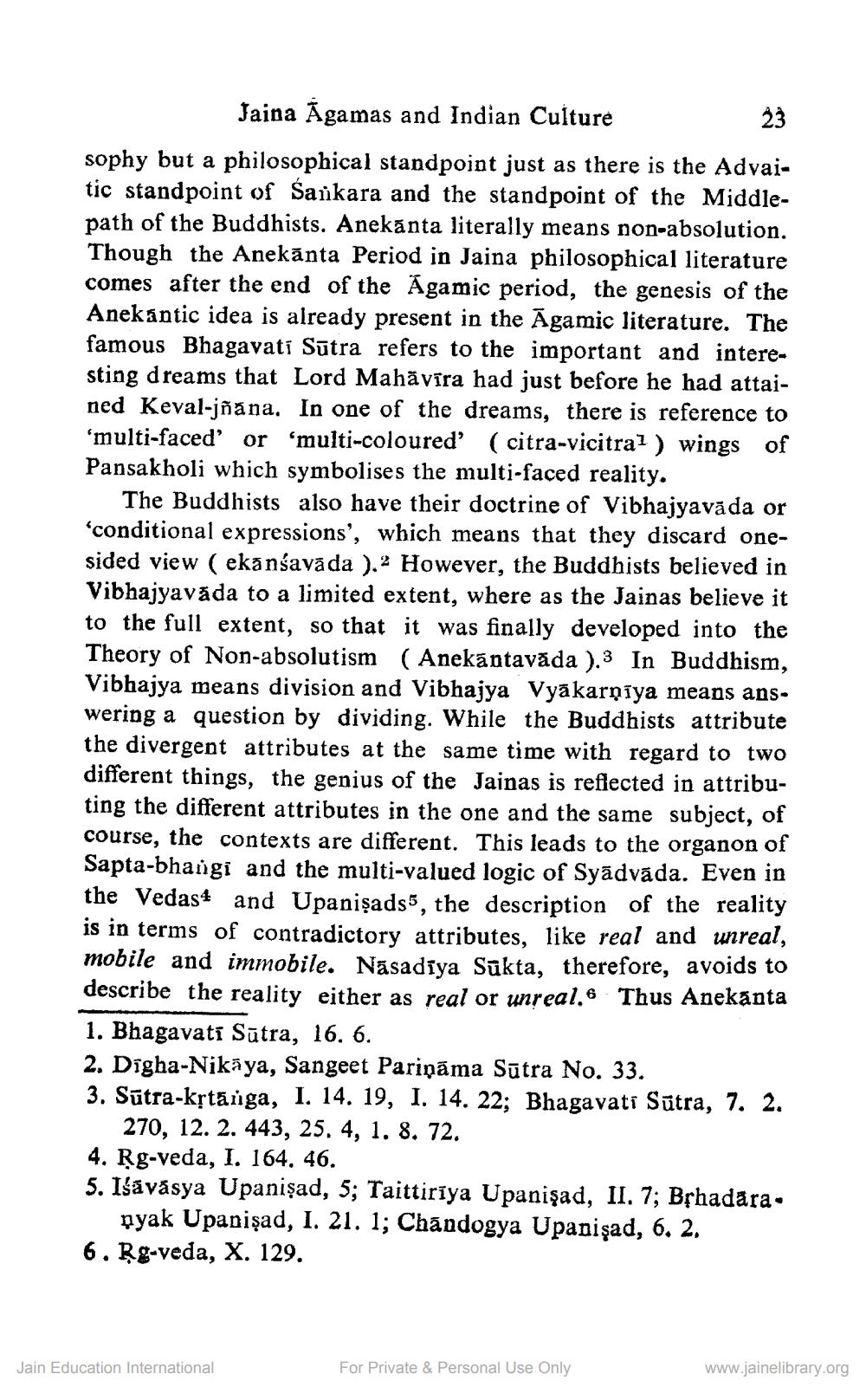________________
Jaina Agamas and Indian Culture
23
sophy but a philosophical standpoint just as there is the Advaitic standpoint of Sankara and the standpoint of the Middlepath of the Buddhists. Anekanta literally means non-absolution. Though the Anekanta Period in Jaina philosophical literature comes after the end of the Agamic period, the genesis of the Anekantic idea is already present in the Agamic literature. The famous Bhagavati Sūtra refers to the important and interesting dreams that Lord Mahāvīra had just before he had attained Keval-jñana. In one of the dreams, there is reference to 'multi-faced' or 'multi-coloured' (citra-vicitra1) wings of Pansakholi which symbolises the multi-faced reality.
The Buddhists also have their doctrine of Vibhajyavāda or 'conditional expressions', which means that they discard onesided view ( ekanśavada ).2 However, the Buddhists believed in Vibhajyavāda to a limited extent, where as the Jainas believe it to the full extent, so that it was finally developed into the Theory of Non-absolutism (Anekantavāda ).3 In Buddhism, Vibhajya means division and Vibhajya Vyakarṇīya means answering a question by dividing. While the Buddhists attribute the divergent attributes at the same time with regard to two different things, the genius of the Jainas is reflected in attributing the different attributes in the one and the same subject, of course, the contexts are different. This leads to the organon of Sapta-bhangi and the multi-valued logic of Syadvada. Even in the Vedas and Upanisads5, the description of the reality is in terms of contradictory attributes, like real and unreal, mobile and immobile. Nasadīya Sukta, therefore, avoids to describe the reality either as real or unreal. Thus Anekanta 1. Bhagavati Sūtra, 16. 6.
2. Digha-Nikaya, Sangeet Pariņāma Sūtra No. 33.
3. Sutra-kṛtanga, I. 14. 19, I. 14. 22; Bhagavati Sūtra, 7. 2. 270, 12. 2. 443, 25. 4, 1. 8. 72.
4. Rg-veda, I. 164. 46.
5. Isavasya Upanisad, 5; Taittirīya Upanisad, II. 7; Bṛhadara. nyak Upanisad, I. 21. 1; Chandogya Upanisad, 6. 2.
6. Rg-veda, X. 129.
Jain Education International
For Private & Personal Use Only
www.jainelibrary.org




